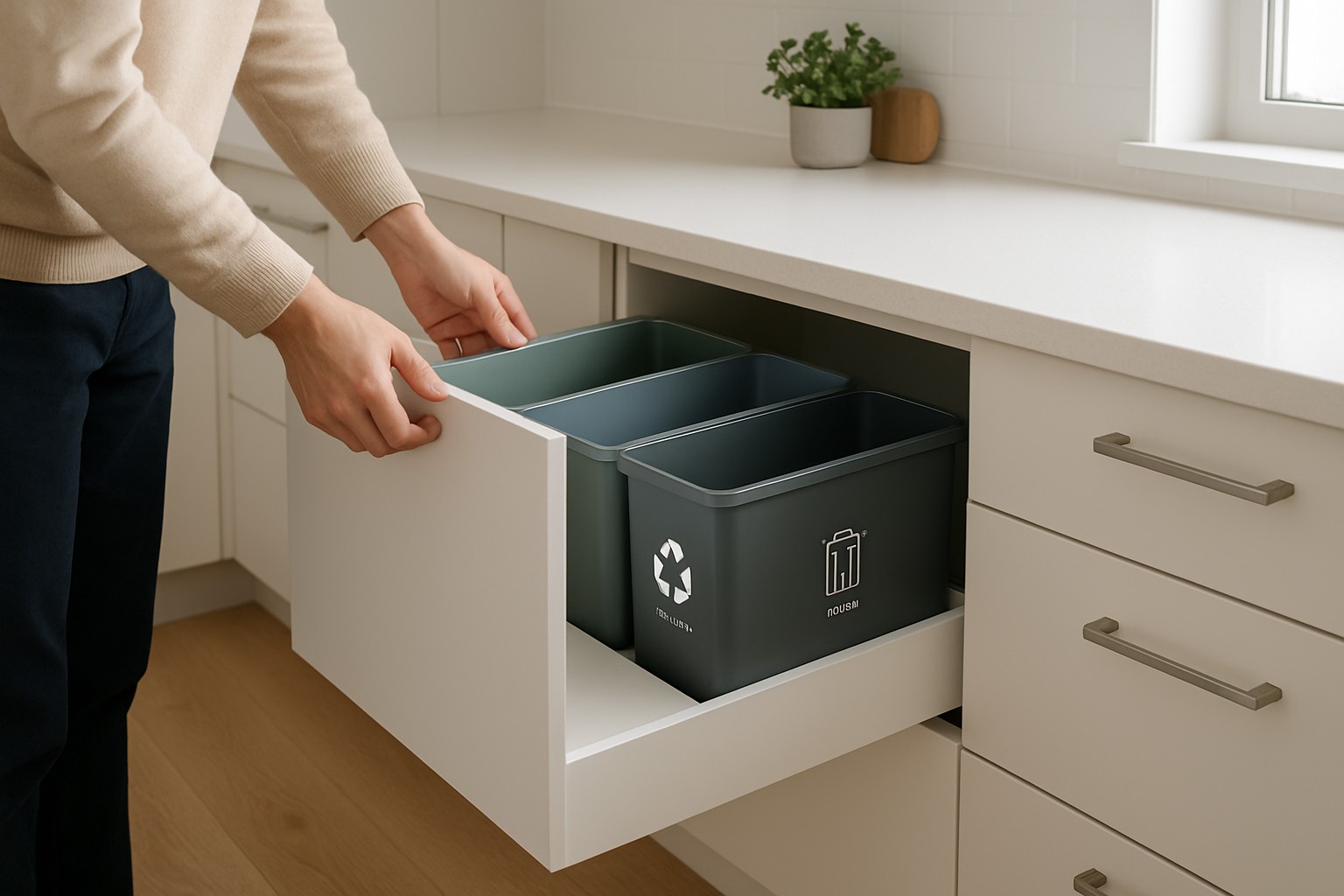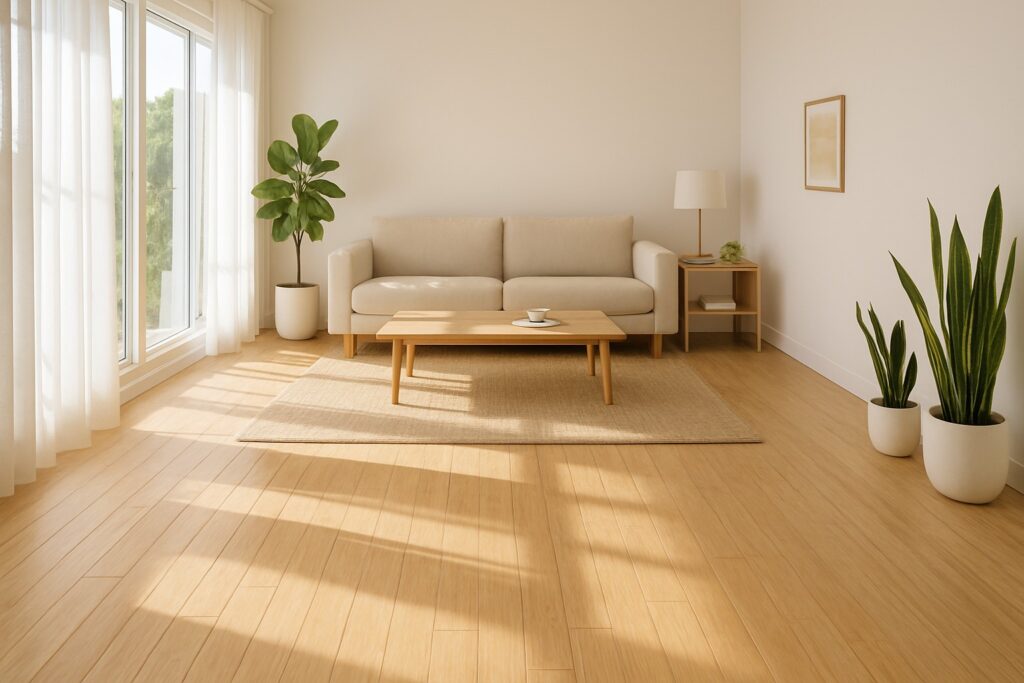Green homes sell faster and slightly more. Home buyers increasingly connect eco-friendly features with lower operating costs and healthier living, creating a win-win for the planet and your pocketbook.
Whether you’re planning to list next spring or simply want a more efficient house, the upgrades below deliver measurable returns. We’ll cover four categories: energy, water, materials, and waste, plus financing tips so you can start smart and stay on budget.
Market Demand & ROI Snapshot
The demand for sustainable homes is no longer a niche trend; it’s a mainstream market expectation. Recent data highlights just how valuable these upgrades have become:
- Buyers consider energy efficiency extremely important in their search.
- Homes with a green certification like ENERGY STAR®, LEED, or Green Globes command a resale premium, depending on the region.
- With utility rates rising year-over-year nationwide, features that reduce monthly bills are more attractive than ever.
The takeaway is clear: sustainable upgrades are a strategic investment that can future-proof your property’s value.
Energy-Efficiency Upgrades
Energy improvements offer some of the most significant returns, both in monthly savings and resale value. Here are the top areas to focus on:
ENERGY STAR® Appliances
Upgrading to ENERGY STAR® certified appliances is a straightforward way to cut energy use. These models offer average energy savings of 10-40% compared to their standard counterparts.
The typical payback period through lower utility bills is just 3-5 years. Always keep your purchase receipts and the ENERGY STAR labels, as buyers appreciate tangible proof of performance.
Solar Panels & Battery Storage
Many utilities offer additional rebates ranging from $250 to $1,000. In sunny states, homeowners can often recoup their solar costs while seeing an immediate boost in their home’s listing appeal.
Reputable guides to modern residential solar panels for homes can help you size a system that matches your roof, budget, and climate. Berkeley Lab research shows an average resale premium of $4,000 per installed kilowatt, and adding a battery for backup power can qualify for extra credits.
High-Efficiency HVAC & Smart Thermostats
Modern HVAC systems can cut cooling costs. When paired with a smart thermostat that uses learning algorithms and smart zoning, you can save on your energy bills, according to the EPA. Many utility companies offer rebates of $300-$1,200 for these high-efficiency upgrades.
Insulation & High-Performance Windows
Don’t overlook the building envelope. Boosting attic insulation from a minimal R-11 to an R-49 can trim heating bills, according to the Department of Energy. Similarly, upgrading to low-e, double-pane windows can reduce heat loss. Buyers will notice the immediate comfort difference, and these upgrades often qualify for lower interest rates on “green mortgages.”
Water Conservation & Landscaping
Reducing water consumption is another key area where sustainable upgrades can add significant value. From simple fixture swaps to comprehensive water-reclamation systems, these strategies reduce consumption while lowering utility costs:
Water-Saving Fixtures
Simple changes like installing low-flow faucets, showerheads, and aerators can cut water consumption. Upgrading to a dual-flush toilet can save a family of four up to 13,000 gallons of water annually.
Rainwater Harvesting & Greywater Systems
Advanced systems offer even greater savings. A rainwater harvesting system can store rain to irrigate landscaping, while a greywater system can recycle water from laundry or showers to flush toilets. This eco-double play dramatically slashes municipal water bills.
Drought-Tolerant / Native Landscaping
A professionally designed xeriscape can reduce outdoor watering needs. This not only saves water but also provides excellent curb appeal without the weekly maintenance of a traditional lawn. In arid states, appraisers are increasingly adding value for these climate-appropriate yards.
Sustainable Materials & Indoor Air Quality
The materials you use inside your home matter to health-conscious buyers. Today’s homebuyers are increasingly aware of what goes into their living spaces; not just for environmental reasons, but for their families’ well-being.
Choosing sustainable, low-toxicity materials demonstrates that your home was thoughtfully upgraded with long-term livability in mind. These improvements create measurable value through better indoor air quality, reduced maintenance, and strong appeal to eco-minded purchasers who are willing to pay more for homes that align with their values.
Renewable Materials
Consider materials with a smaller environmental footprint. Bamboo flooring, for example, grows back in just five years and rivals oak for durability. Reclaimed wood for beams or accent walls adds unique character while diverting lumber from landfills.
Low-/No-VOC Paints & Finishes
Health sells. Using zero-VOC interior paints eliminates the off-gassing of harmful chemicals, a factor that many parents and allergy sufferers actively look for during home tours. The small cost premium of about $2-$4 per gallon is easily justified by its appeal to a broader pool of buyers.
Waste-Reduction Features

Alt text: Modern kitchen drawer with organized recycling and waste bins.
Thoughtful features that make recycling and composting easier can be a surprising and delightful selling point. Modern eco-conscious homebuyers are increasingly drawn to properties with integrated waste management solutions that seamlessly blend sustainability with everyday convenience:
- Built-in compost drawers near kitchen prep zones encourage the recycling of food scraps.
- Pull-out cabinetry designed to separate paper, glass, and plastics streamlines daily sorting.
- Pantries designed for refillable containers help homeowners curb single-use packaging, a thoughtful detail now highlighted in some MLS “green feature” fields.
What Buyers Look For in an Eco-Friendly Home
When it’s time to sell, here’s how to effectively showcase your green upgrades:
- Certifications: Official certifications like LEED, ENERGY STAR Home, or Green Globes build instant trust and credibility.
- Documented Savings: Provide the last 12 months of utility bills, along with warranty paperwork and manuals for all upgrades.
- Smart-Home Dashboards: A system that provides real-time monitoring of energy and water use signals transparency and modern efficiency.
Actionable Improvement
Price out a rooftop solar array and compare its ROI with regional data while upgrading your attic insulation to the recommended R-values for your climate zone.
Install low-flow fixtures and rethink your lawn irrigation strategy to reduce water consumption, and choose low-VOC paints for your next interior refresh to improve indoor air quality. Most importantly, document all receipts, warranties, and certifications in a digital folder for future buyers.
Start small, build momentum, and you’ll create a healthier, more valuable home. By investing in sustainability, you’re not just improving your property; you’re investing in a smarter future.

